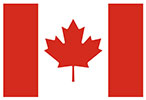Quick Summary: Conflict at work isn’t always loud or obvious. This guide breaks down the five levels of conflict—from subtle discomfort to crisis—with clear actions to take at each stage.
Not all workplace conflict looks the same. Some tension is easy to spot, while other times something just feels off. Recognizing the signs early can help prevent small misunderstandings from growing into major problems.
The 5 Levels of Conflict
How to use this guide
Conflict typically moves through five stages—from subtle tension to full escalation. For each level below, you’ll see a quick description, a short example, specific actions to take, and a reminder to keep you on track.
Level 1: Discomfort
You sense something isn’t quite right—there’s tension in the air, awkward interactions, or subtle changes in tone.
Example: A usually talkative teammate becomes quiet in meetings and avoids eye contact.
What to do
- Notice patterns: has anything changed in recent interactions?
- Check in informally (“How are things going this week?”).
- Ask open-ended questions to surface concerns.
Keep in mind: Acknowledge feelings early—before issues become visible or spoken.
Level 2: Dispute
A direct exchange leaves one or both people upset or irritated. The focus shifts to who is right instead of solving the problem.
Example: After a Slack thread gets heated, two colleagues stop responding to each other.
What to do
- Pause to cool off before replying.
- Clarify what was said versus what was heard.
- Refocus on the issue and shared outcomes—not the person.
Keep in mind: Address the issue directly while keeping emotions in check.
Level 3: Disagreement
Debates become tense, feelings are guarded, and communication gets vague. Others may notice the tension but hesitate to get involved.
Example: You and a peer keep revisiting the same decision without clarity, and meetings feel unproductive.
What to do
- Schedule a focused conversation with time and privacy.
- Use “I” statements to share impact without blame.
- Invite their perspective and summarize points of alignment.
Keep in mind: Open dialogue and clarity prevent deeper misunderstandings.
Level 4: Escalation
People start taking sides, perspectives become distorted, and emotions run high. The relationship feels personal rather than professional.
Example: Team members avoid joint meetings because discussions quickly become confrontational.
What to do
- Engage a neutral third party (manager or mediator).
- Reframe the issue as a shared challenge to solve.
- Set ground rules and focus on rebuilding trust.
Keep in mind: Shift attention from personal conflict to collaborative problem-solving.
Level 5: Critical Turning Point
The conflict has fully escalated into crisis. Relationships may rupture, emotions are extreme, and the focus turns to winning rather than resolving.
Example: Work is disrupted, formal complaints are filed, or someone refuses to collaborate.
What to do
- Seek formal intervention (HR, mediation, or professional support).
- Align on what resolution is realistic—repairing the relationship or moving forward separately.
Keep in mind: Professional support is essential to resolve deeply rooted conflict.
Keep these strategies close at hand — download your free Quick Reference Guide to manage conflict effectively at every level.
Frequently Asked Questions
How can I tell if a conflict is escalating?
Watch for increased tension, avoidance, side-taking, or breakdowns in communication. These are signals to move from informal check-ins to a more structured conversation.
What’s the best way to calm a heated situation?
Pause to let emotions settle, then return with empathy and a problem-solving mindset. Use neutral language, name the shared goal, and agree on next steps.
When should I involve HR or a mediator?
Bring in neutral support when conversations repeatedly break down, become personal, or start to affect team dynamics or performance.



